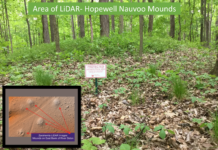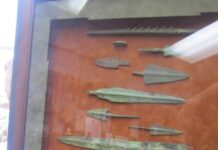Many intellectuals seem determined to convince everyone that the prophet was simply a man. Elder Packer said, “We knew that already.” He was and is now, simply an incredible Prophet of God.
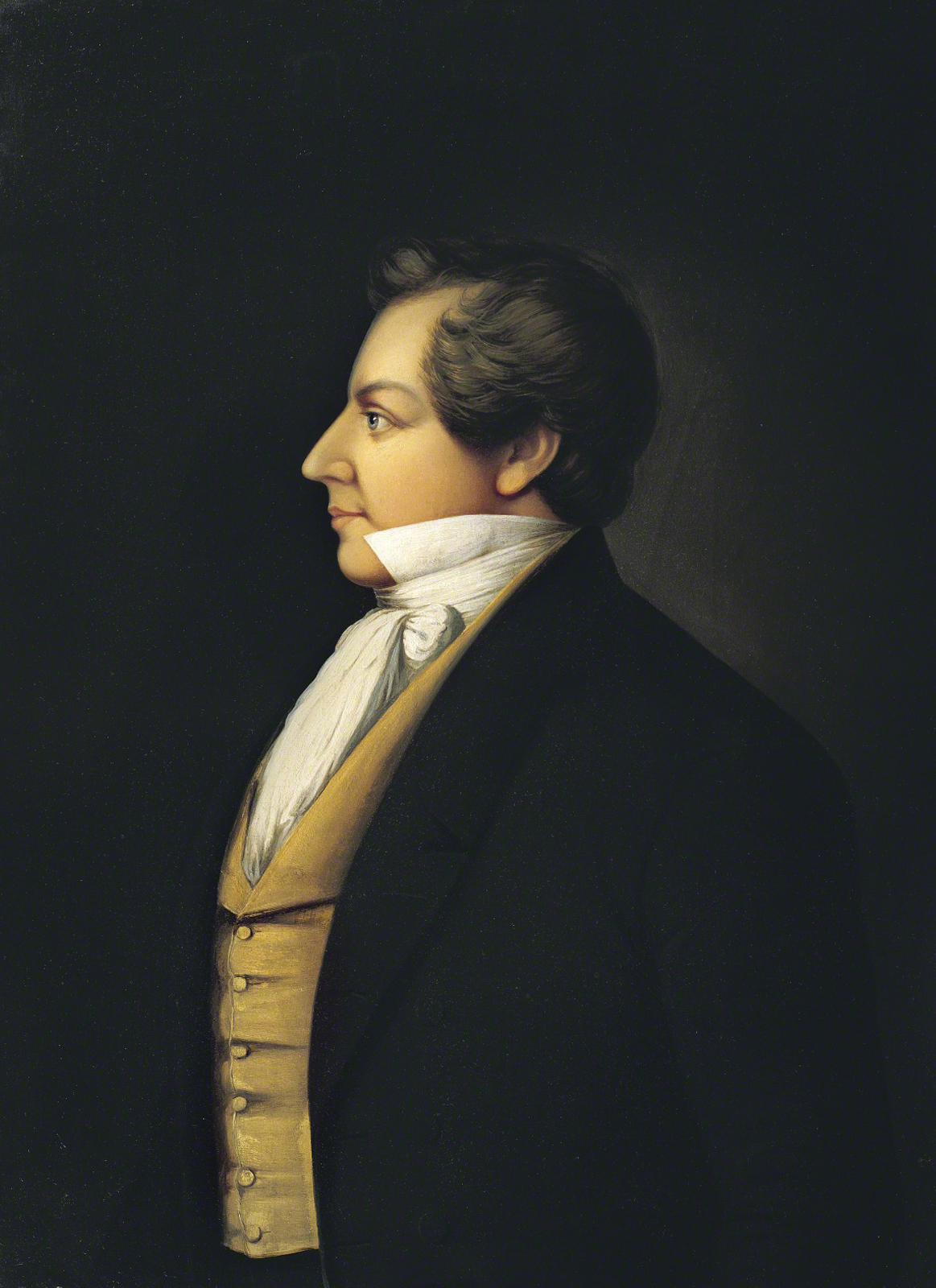 “Joseph Smith, the and of the Lord, has done more, Jesus only, for the salvation of men in this world, than any other man that ever lived in it.” D&C 135:3
“Joseph Smith, the and of the Lord, has done more, Jesus only, for the salvation of men in this world, than any other man that ever lived in it.” D&C 135:3
Joseph Knew the Book of Mormon Geography
I feel it is significant to show some of the deeply held biases of some of our intellectual members of the church. When it comes to geography of the Book of Mormon I believe Joseph Smith knew all along that events began in North America.
Joseph said in the Wentworth letter, “I was also informed concerning the aboriginal inhabitants of this country [America] and shown who they were, and from whence they came; a brief sketch of their origin, progress, civilization, laws, governments, of their righteousness and iniquity, and the blessings of God being finally withdrawn from them as a people, was [also] made known unto me; I was also told where were deposited some plates on which were engraven an abridgment of the records of the ancient prophets that had existed on this continent…”
Joseph continued in the Wentworth letter to say, “With the records was found a curious instrument, which the ancients called “Urim and Thummim,” which consisted of two transparent stones set in the rims of a bow fastened to a breastplate. Through the medium of the Urim and Thummim I translated the record by the gift and power of God.
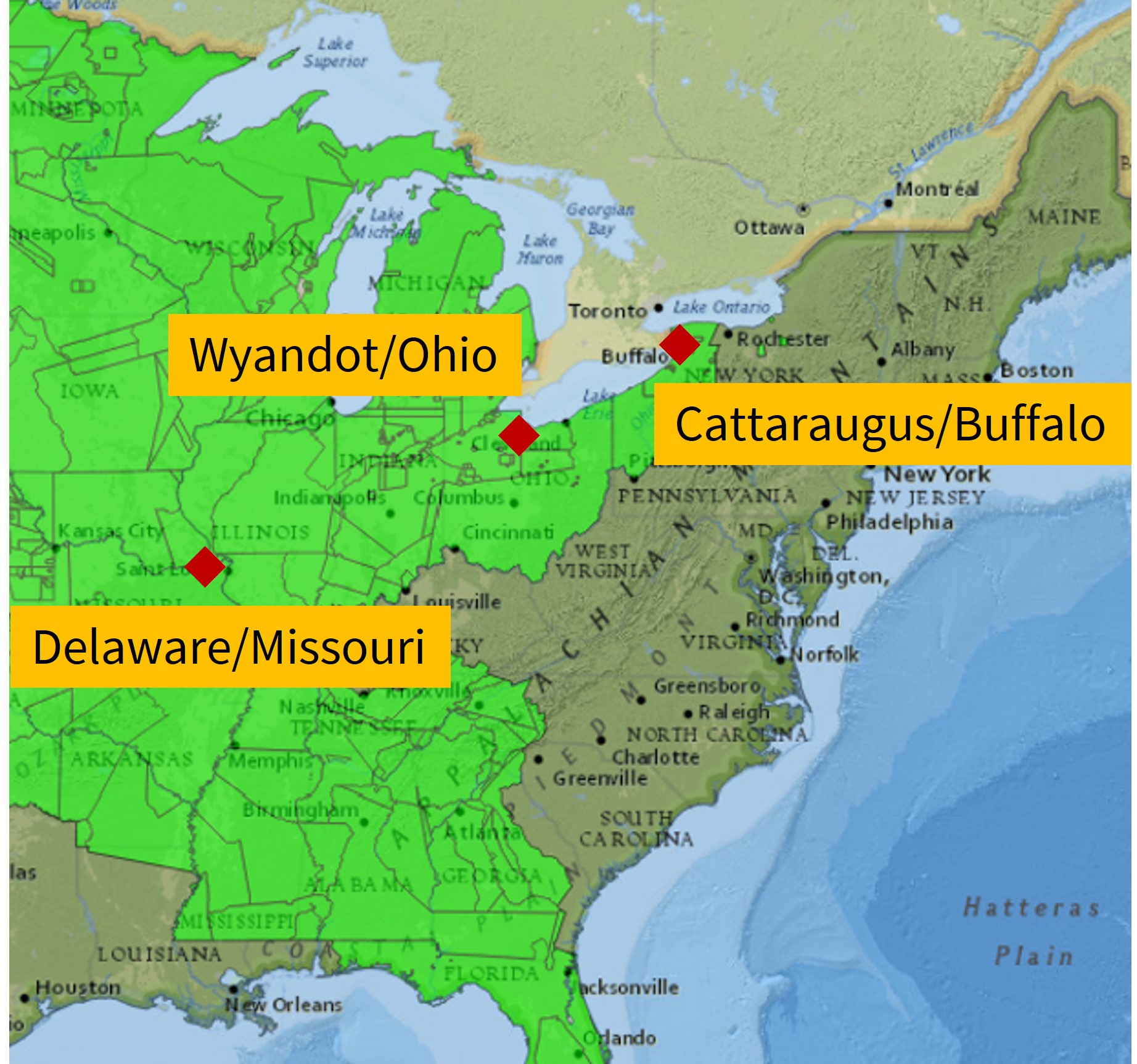
In this important and interesting book the history of ancient America is unfolded, from its first settlement by a colony that came from the Tower of Babel at the confusion of languages to the beginning of the fifth century of the Christian era. We are informed by these records that America in ancient times has been inhabited by two distinct races of people. The first were called Jaredites and came directly from the Tower of Babel. The second race came directly from the city of Jerusalem about six hundred years before Christ. They were principally Israelites of the descendants of Joseph. The Jaredites were destroyed about the time that the Israelites came from Jerusalem, who succeeded them in the inheritance of the country. The principal nation of the second race fell in battle towards the close of the fourth century. The remnant are the Indians that now inhabit this country. This book also tells us that our Savior made His appearance upon this continent after His Resurrection;” Wentworth Letter (Red Text added which shows to me that Joseph was speaking from the area of New York in the USA and his references were about America, not Mesoamerica. It’s logical and makes sense).
List of all Speakers and the Schedule, Click Here
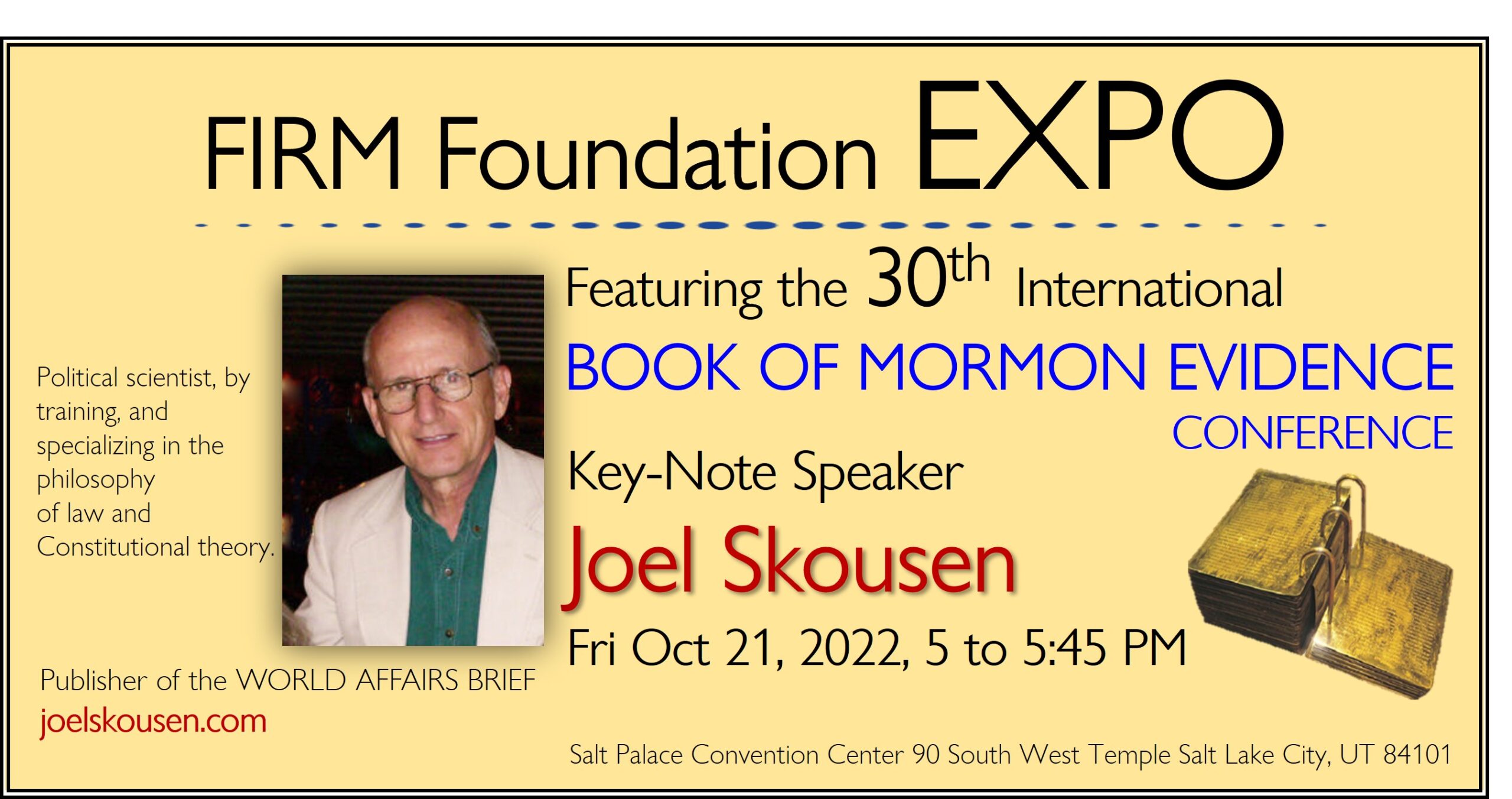
Early-Bird Prices end Sept 15. Purchase Today!
Decide Truth
We should all be open minded to listen to differences in our opinions about the geography of the Book of Mormon. I believe there is only one Hill Cumorah and others are welcomed to share why they feel there are two Cumorah’s. I believe events of the Book of Mormon happened in the USA and others who contribute to some of our Church publications such s “Saints”, believe events happened in Central America. The Church of Jesus Christ of Latter-day Saints is officially neutral about where the events took place. Since the Church is neutral, why do many intellectuals who correlate and edit Church History, promote a specific geography in Central America? It’s a subject worth learning more about. I believe Joseph Smith taught a North American setting for the Book of Mormon and never hinted at a Central American setting. You can decide what you believe.
Intellectuals Concerned about an Occultic Joseph?
 Pres Benson said, “For those concerned how this occultic “Joseph Smith” could make its way into Church publications, President Ezra Taft Benson offered this advice, “Sometimes from behind the pulpit, in our classrooms, in our Council meetings and in our church publications we hear, read or witness things that do not square with the truth. . . . Now do not let this serve as an excuse for your own wrong-doing. The Lord is letting the wheat and the tares mature before he fully purges the Church. He is also testing you to see if you will be misled. The devil is trying to deceive the very elect.” Ezra Taft Benson, “Our Immediate Responsibility” (BYU Devotional, Provo, October 25, 1996), https://speeches.byu.edu/talks/ezra-taft-benson_immediateresponsibility.
Pres Benson said, “For those concerned how this occultic “Joseph Smith” could make its way into Church publications, President Ezra Taft Benson offered this advice, “Sometimes from behind the pulpit, in our classrooms, in our Council meetings and in our church publications we hear, read or witness things that do not square with the truth. . . . Now do not let this serve as an excuse for your own wrong-doing. The Lord is letting the wheat and the tares mature before he fully purges the Church. He is also testing you to see if you will be misled. The devil is trying to deceive the very elect.” Ezra Taft Benson, “Our Immediate Responsibility” (BYU Devotional, Provo, October 25, 1996), https://speeches.byu.edu/talks/ezra-taft-benson_immediateresponsibility.
I have noticed some peculiar beliefs behind some very intellectual men and women that are good active members. They believe in Christ and the Gospel. They believe in the Doctrine of the Church. They generally believe the First Presidency and the Quorum of the Twelve. They believe in past Prophets and Apostles mostly. (Most likely disagreeing slightly with Joseph Smith, Joseph Fielding Smith, Ezra Taft Benson, and David O. McKay. They believe members of the Quorum of the Seventy mostly but have a few different opinions on many issues. They believe their peers, and scholars in a group think setting. They believe the Prophet Joseph Smith, but often try and put him down, or make him more human.
 I realize I am generalizing, but I am trying to make a point. In my opinion it seems many historians, professors and intellectuals try and bring Joseph Smith down just a notch more often than anyone else.
I realize I am generalizing, but I am trying to make a point. In my opinion it seems many historians, professors and intellectuals try and bring Joseph Smith down just a notch more often than anyone else.
Elder Packer said, “Some historians write and speak as though the only ones to read or listen are mature, experienced historians. They write and speak to a very narrow audience. Unfortunately, many of the things they tell one another are not uplifting, go far beyond the audience they may have intended, and destroy faith. What that historian did with the reputation of the President of the Church was not worth doing. He seemed determined to convince everyone that the prophet was a man. We knew that already. All of the prophets and all of the Apostles have been men. It would have been much more worthwhile for him to have convinced us that the man was a prophet, a fact quite as true as the fact that he was a man.” The Mantle Is Far, Far Greater Than the Intellect Elder Boyd K. Packer
Quotes about Intellectual Opinions
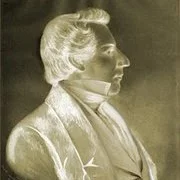 “Mormonism, as it is called, must stand or fall on the story of Joseph Smith. He was either a Prophet of God, divinely called, properly appointed and commissioned or he was one of the biggest frauds this world has ever seen. There is no middle ground. If Joseph was a deceiver, who willfully attempted to mislead people, then he should be exposed, his claims should be refuted, and his doctrines shown to be false” .Joseph Fielding Smith, Doctrines of Salvation, vol. 1 (Bookcraft, 1960), 188
“Mormonism, as it is called, must stand or fall on the story of Joseph Smith. He was either a Prophet of God, divinely called, properly appointed and commissioned or he was one of the biggest frauds this world has ever seen. There is no middle ground. If Joseph was a deceiver, who willfully attempted to mislead people, then he should be exposed, his claims should be refuted, and his doctrines shown to be false” .Joseph Fielding Smith, Doctrines of Salvation, vol. 1 (Bookcraft, 1960), 188
I have come to believe that it is the tendency for many members of the Church who spend a great deal of time in academic research to begin to judge the Church, its doctrine, organization, and leadership, present and past, by the principles of their own profession. Ofttimes this is done unwittingly, and some of it, perhaps, is not harmful. The Mantle Is Far, Far Greater Than the Intellect Elder Boyd K. Packer
 This problem has affected some of those who have taught and have written about the history of the Church. These professors say of themselves that religious faith has little influence on Mormon scholars. They say this because, obviously, they are not simply Latter-day Saints but are also intellectuals trained, for the most part, in secular institutions. They would that some historians who are Latter-day Saints write history as they were taught in graduate school, rather than as Mormons. The Mantle Is Far, Far Greater Than the Intellect Elder Boyd K. Packer
This problem has affected some of those who have taught and have written about the history of the Church. These professors say of themselves that religious faith has little influence on Mormon scholars. They say this because, obviously, they are not simply Latter-day Saints but are also intellectuals trained, for the most part, in secular institutions. They would that some historians who are Latter-day Saints write history as they were taught in graduate school, rather than as Mormons. The Mantle Is Far, Far Greater Than the Intellect Elder Boyd K. Packer
President Brigham Young admonished Karl G. Maeser not to teach even the times table without the Spirit of the Lord. How much more essential is that Spirit in the research, the writing, and the teaching of Church history. The Mantle Is Far, Far Greater Than the Intellect Elder Boyd K. Packer
I don’t believe these quotes above were said too long ago for us to believe them today. Why do we at times become complacent with older quotes of Prophets and look for new and out of the box thinking? I love the quotes above and know many intellectuals at BYU and in may Stakes, try too much to come up with new and seemingly progressive ideas. Say no the revisionists and stick with traditional values which are still important today. It’s been a few years since the amazing “Faith Crisis” books of the Stoddard’s have come to light, but they are more relevant today than ever. I challenge you to read them and have your children who may have a faith crisis read them. All will learn that it’s ok to be traditional.
FAITH CRISIS: Did the LDS Church Lie? (Part 1 ) We Were NOT Betrayed! By James and Hannah Stoddard
“A Reconstructed Narrative”
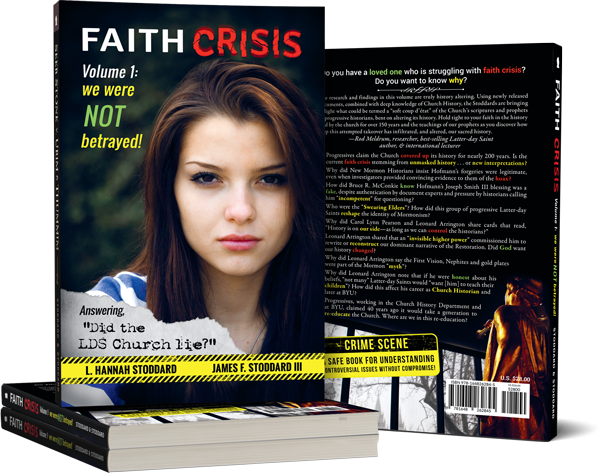
“Many remain unaware of the growing movement among disaffected members and disgruntled academic scholars within the Church to change our history. While the effort to progressively alter the traditional history is not a new phenomenon, the last few years have produced a sharp increase in the number of prominent Latter-day Saint historians and intellectual scholars who are calling for a ‘reconstructed narrative.’
The Bushman Challenge
One of those leading that charge [reconstructed narrative] is Richard L. Bushman, a prominent, progressive, New Mormon Historian whom some consider the “world’s foremost scholar on Joseph Smith and early Mormonism.” During a July 12, 2016 fireside, Bushman responded to a participant’s question regarding whether the traditional understanding of Church history is accurate:
Question: In your view do you see room in Mormonism for several narratives of a religious experience or do you think that in order for the Church to remain strong they would have to hold to that dominant narrative?

Richard Bushman: I think that for the Church to remain strong it has to reconstruct its narrative. The dominant narrative is not true; it can’t be sustained. The Church has to absorb all this new information or it will be on very shaky grounds and that’s what it is trying to do and it will be a strain for a lot of people, older people especially. But I think it has to change. The following month, Bushman elaborated on his meaning in connection with a new reconstructed narrative by making the following statement: “I consider Rough Stone Rolling a reconstructed narrative. It was shocking to some people. They could not bear to have the old story disrupted in any way. What I was getting at in the quoted passage is that we must be willing to modify the account according to newly authenticated facts. If we don’t we will weaken our position. Unfortunately, not everyone can adjust to this new material.
Many think they were deceived and the church was lying. That is not a fair judgment in my opinion. The whole church, from top to bottom, has had to adjust to the findings of our historians. We are all having to reconstruct.” Richard Bushman Bushman is not alone in calling for a new Joseph Smith, and a new Church history with an accompanying newly-crafted Mormon culture. Throughout this and later chapters we will hear from historians who are encouraging a “new era,” and who hope to shift the general consciousness of the Church toward one of ‘intellectual enlightenment.’ One professor even went so far as to call for the “foundation” to be torn down and completely rebuilt.
According to Bushman, from the most-recently baptized member, to multi-generational Latter-day Saints born and raised in the Church—all the way to the hierarchy—large numbers many are turning to the historians who are eagerly altering the foundational fundamental restoration story, based on their new ‘enlightened’ own interpretation. In the progressive mind their minds, Latter-day Saints have been fed a fictitious fallacious account of their Mormon origins, but all now need to adapt their antiquate down understanding ideas to match the positions of these broad-minded progressive historians. For Bushman and his eager proselytes, the old story was inaccurate, and—at best—a feel-good myth; or—at worst it was a deliberate deceit, at its worst. Apparently, everyone was fooled except a few the New Mormon Historians, who have now solved the puzzle.
Who is this new ‘Joseph Smith,’ and what constitutes a “reconstructed narrative”? For those who are unaware, Bushman’s book, Rough Stone Rolling, presents a Joseph Smith who differs dramatically from the Joseph Smith advocated spoken of by past leaders, teachers and scholars in Presidents of the Church.
In contrast According to Rough Stone Rolling:
- Joseph Smith was “involved in magic” (p 53).
- Joseph Smith’s involvement in “magic . . . was a preparatory gospel” (p 53) and “[r]emnants of the magical culture stayed with him to the end” (p 51).
- Joseph Smith gave “angry responses,” and “lashed back.” (pp 295-296).
- Joseph Smith had “easily bruised pride.“ He was “unable to bear criticism” and “rebuked anyone who challenged him” (p 296).
- Joseph Smith suffered from “treasure-seeking greed” (p 51).
- The Smith family has been “diagnosed as a dysfunctional family that produced a psychologically crippled son” (p 55).
- The Smith family was drawn to “treasure-seeking folklore,” and saw astrology and magical “formulas and rituals” as connected to their spiritual well-being (pp 50-51).
- “Magic and religion melded in Smith family culture” (p 51).
- Consecration “never worked properly. . . . The system’s two-year existence was about average for the various communal experiments being undertaken in the period” (p 183).
- Joseph Smith Sr. was an “oft-defeated, unmoored father” (pp 26-27) who “partially abdicated family leadership” (p 42).
- Joseph Smith Sr.’s “life [was] blighted by shame” (p 42).
- “Was Joseph Smith an adulterer? . . . Had Joseph been involved in an illicit affair?” (p 323)
- Joseph Smith’s “boasting” made his personal secretary “a little uncomfortable” (p 484). Joseph would “cut loose with extravagant comments about his mastery” (p 484).
- Joseph Smith had “outrageous confidence” for attempting the Joseph Smith Translation (JST) of the Bible (p 132).
- “Treasure seeking taught Joseph to look for the unseen in a stone” (p 131).
- Joseph “from time to time drank too much” (p 43).
- Joseph “probably exaggerated” the persecution after relating his First Vision. (p 43)
- Joseph Smith had “[n]o flashes of intelligence, ambition, or faith distinguish him” (p 143).
- Joseph Smith “was not the luminous figure he is sometimes made out to be. . . . His own person was effaced” (p 112).
Bushman admitted that the proposed ‘reconstructed narrative’ of Latter-day Saint Church History, as well as the life and character of the Prophet Joseph Smith clearly departed from the traditional or “dominant narrative” given to us by previous past Church historians, including Willard Richards, who was present at the Carthage martyrdom, George A. Smith, first cousin to the Prophet Joseph Smith, and Presidents Wilford Woodruff and Joseph Fielding Smith.
Is The Dominant Narrative True?
Is the dominant narrative true? To answer this question, we must first define what it is that represents the dominant narrative. For nearly two centuries, the Church maintained a consistent message about its foundational events; that God directed Joseph Smith as His Prophet to restore His truth, and to organize the Church according to the pattern of His primitive Church. Furthermore, that account characterizes the Prophet Joseph Smith as a righteous man who built the Church based on literal revelations received directly from God; that actual angels appeared, and the members witnessed the manifestation of authentic miracles.
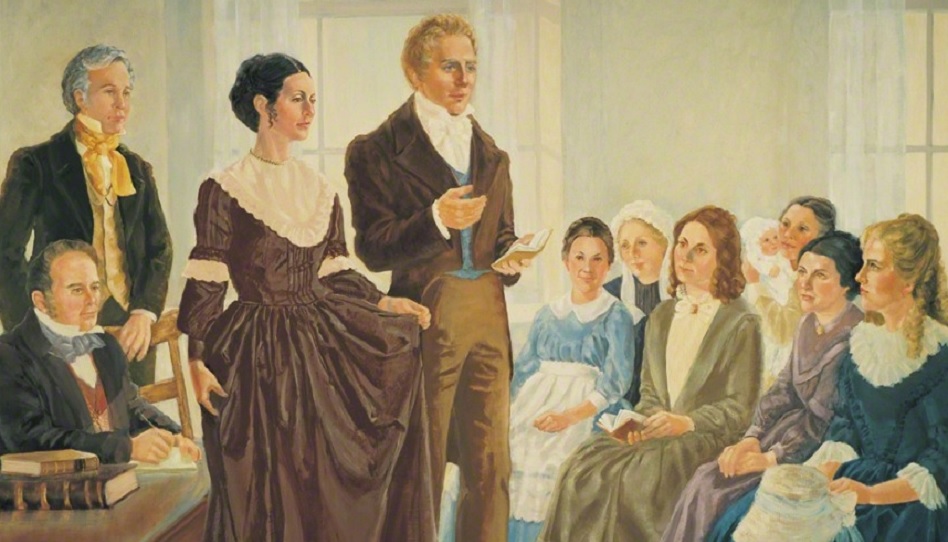 Additionally, God restored His priesthood through Joseph Smith, the restorer and Head of this dispensation, who stands next to the Son of God in righteousness and holiness as a pure and holy vessel. Subsequent to the sealing of the Prophet Joseph Smith’s testimony with his blood—at the Martyrdom where he fell with his noble brother, Hyrum—Brigham Young, who called himself “Joseph’s apostle,” continued to promote the teachings of the Prophet Joseph Smith, and to orchestrate his vision. Succeeding leaders and faithful members earnestly strive to carry on the Prophet Joseph’s work, testifying of and echoing his teachings in their lives, and to the world. Traditionalists believe the points of the foregoing represent the essence—the dominant narrative—of the Restoration event, and that true history and credible sources corroborate the particulars of this account. The evidence, and the historical witnesses, stand in full support of the Church’s and Joseph Smith’s accounts.
Additionally, God restored His priesthood through Joseph Smith, the restorer and Head of this dispensation, who stands next to the Son of God in righteousness and holiness as a pure and holy vessel. Subsequent to the sealing of the Prophet Joseph Smith’s testimony with his blood—at the Martyrdom where he fell with his noble brother, Hyrum—Brigham Young, who called himself “Joseph’s apostle,” continued to promote the teachings of the Prophet Joseph Smith, and to orchestrate his vision. Succeeding leaders and faithful members earnestly strive to carry on the Prophet Joseph’s work, testifying of and echoing his teachings in their lives, and to the world. Traditionalists believe the points of the foregoing represent the essence—the dominant narrative—of the Restoration event, and that true history and credible sources corroborate the particulars of this account. The evidence, and the historical witnesses, stand in full support of the Church’s and Joseph Smith’s accounts.
Progressives disagree adamantly, arguing that the dominant narrative of the Church is “not true,” and believing that an immense cover-up has occurred—that when acknowledged, will allow a full-scale reconstruction of the story. The Angel Moroni told Joseph Smith that his name would be “had for good and evil,” so it is perhaps fitting that the struggle continues, both on the world’s stage and in the homes of the members of the Church. Time will vindicate the truthfulness of the record; that there was no cover-up, and that the true greatness of Joseph Smith is not less—but rather far greater—than what we might have imagined. Nevertheless, the Church is a temporal organization of imperfect human beings who strive, with varying degrees of success, to follow God’s will. Along the way, there have been some issues and historical complexities in which Presidents of the Church and other General Authorities acted in less-than-straight-forward ways. There have been times when the Lord required Presidents to act on His direction, and there may have been other times when Presidents acted according to the best light and knowledge they had, and were doing their best.
Examples of where the Church leaders were perhaps less than one hundred percent straight-forward might include Joseph Smith’s carefully-worded denials of plural marriage in Nauvoo. This can be understood in considering that the Lord had commanded the practice of plural marriage in opposition to the laws of the land, necessitating that its practice be out of the public eye. Another example might be the continuance of post-1890 Manifesto polygamy. The Church publicly discontinued the practice of plural marriage with the issuance of the Manifesto (Official Declaration 1), but plural marriages were afterwards performed with the sanction of the President of the Church for some years. We do hold that the Presidents of the Church did not commit any dishonourable actions or decisions contrary to the will of God.
This becomes clear once one understands the true history. However, the history and further exploration into these subjects exceeds the purpose of this work; they must fall under the pen of a future volume. In addition to these highly-poised issues, Presidents of the Church—especially during the administrations of David O. McKay and Spencer W. Kimball—and even more so during recent times, have paid careful attention to the message available to the media; and so far as is possible, have portrayed the Church in its best-possible light according to public opinion and perception. All businesses and organizations are acutely aware of this necessity today. Is every decision made by leaders altogether inspired? Such answers are far too difficult for us to know individually, but the responsibility stands rightfully between the Lord and the leaders of the Church. We believe, at least generally, that these decisions have been made in righteousness.
However, historical nuances and the analogue of human imperfection are not the focus of this book; nor, we would suggest, are they the source of the ‘trust gap,’ the sense of lost moorings, felt by so many of today’s Latter-day Saints. At the end of the day, one question nagging thousands of Latter-day Saints can be summarized thus: “Is the dominant, traditional narrative true?” One might further ask, “Did the founding of the Church originate as presented by Joseph Smith and his companions who affirmed his narrative, or are there skeletons in the closet?” Progressives claim the Church covered up its history for nearly 200 years, but the student of truth must ask, is the current faith crisis the result of unmasked history . . . or of new interpretations?
The authors believe that the dominant narrative is not only true, but in many respects has been understated. The Restoration of the Gospel of Jesus Christ, and the work of Joseph Smith and those loyal to his mission, is greater than we as a people might understand. It is the sincere belief of the authors that the nobility and greatness of Joseph Smith surpasses the glory that even his most ardent supporters concede.
Unbeknownst to the general Church membership, the 20th century would witness an organized effort to rewrite Latter-day Saint history from within its own ranks. In a head-to-head, behind-the-scenes-battle, traditional leaders resisted intellectual progressives working in the Church History Department and at BYU, who claimed some forty years ago that it would take a generation to re-educate the Church membership. Where are we in this attempted re-education? What is the New Mormon History, and how does it personally affect you and your family?

Join us as we explore newly-available diaries, review old books, and bring untold history into the light!
Leonard Arrington told the Church History Division staff in 1976 that it would “take a generation to educate the Church to historical trends.’”
Leonard J. Arrington Diaries, September 23, 1976; Leonard J. Arrington and Gary James Bergera, Confessions of a Mormon Historian: The Diaries of Leonard J. Arrington, 1971-1997, vol. 2 (Salt Lake City: Signature Books, 2018), 243, footnote 46. Biblical Criticism has led many scholars to determine that the Creation, the story of Adam and Eve, Noah’s worldwide Flood, the account of Jonah and the whale, Moses’ Exodus, and other miraculous events, are merely fictional stories with an allegorical purpose. Where did they come from? Some advocates of Biblical Criticism maintain that many were borrowed from Babylonian and Canaanite pagan myths.” Faith Crisis Part 1, James and Hannah Stoddard


